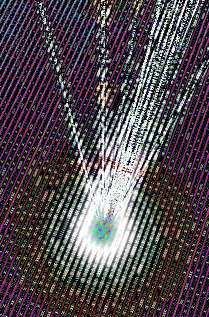Experts aim for quantum privacy
 Experts have outlined what could be an important way for sensitive data to be processed on quantum computers.
Experts have outlined what could be an important way for sensitive data to be processed on quantum computers.
As we head toward the age of quantum computing, it is expected that the first systems will belong to research groups, big companies and governments, like the top supercomputers are today.
But if there is a problem involving sensitive data that only a quantum computer can solve, experts wanted to know how access could be granted without the risk of revelation.
IBM announced this year that it is making a quantum computer with 16 quantum bits, or qubits, accessible to the public for free on the cloud, as well as a 17-qubit prototype commercial processor.
As quantum computers gain more qubits, demand for access is set to increase too.
“We're looking at what's possible if you're someone just interacting with a quantum computer across the internet from your laptop. We find that it's possible to hide some interesting computations,” says Joseph Fitzsimons, a Principal Investigator at the Centre for Quantum Technologies (CQT) at the National University of Singapore.
A new scheme designed by Fitzsimons and his colleagues brings secrecy to a form of quantum computing driven by measurements.
In this scheme, the quantum computer is prepared by putting all its qubits into a special type of entangled state, then the computation is carried out by measuring the qubits one by one. The user provides step-wise instructions for each measurement: the steps encode both the input data and the program.
Researchers have shown previously that users who can make or measure qubits to convey instructions to the quantum computer could disguise their computation. The new paper extends that power to users who can only send classical bits – which is most of us, for now.
This is surprising because some computer science theorems imply that encrypted quantum computation is impossible when only classical communication is available.
The hope for security comes from the quantum computer not knowing which steps of the measurement sequence do what. The quantum computer can't tell which qubits were used for inputs, which for operations and which for outputs.
“It's extremely exciting. You can use this unique feature of the measurement-based model of quantum computing – the way information flows through the state – as a cryptographic tool to hide information from the server,” says team member Tommaso Demarie.
Although the owner of the quantum computer could try to reverse engineer the sequence of measurements performed, ambiguity about the role of each step leads to many possible interpretations of what calculation was done.
The true calculation is hidden among the many, like a needle in a haystack.
The set of interpretations grows rapidly with the number of qubits.
“The set of all possible computations is exponentially large – that's one of the things we prove in the paper – and therefore the chance of guessing the real computation is exponentially small,” says Fitzsimons.
One question remains: could meaningful computations be so rare among all the possible ones that the guessing gets easier?
This is what the researchers need to check next.








 Print
Print